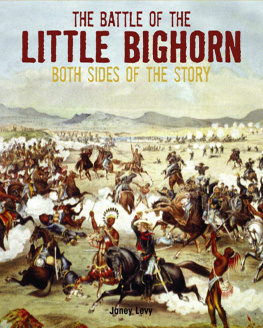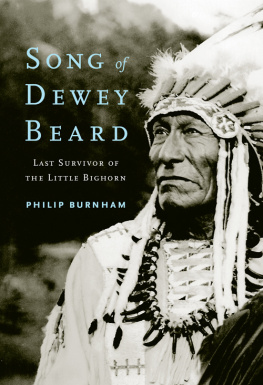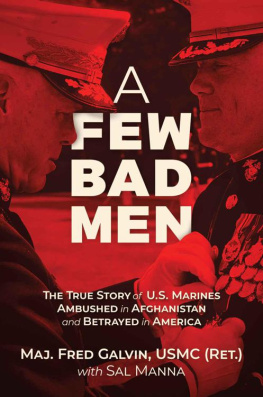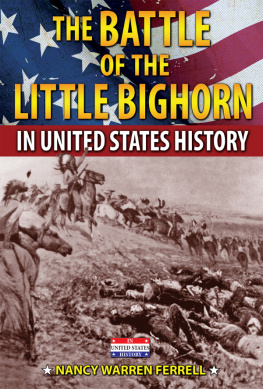This edition is published by PICKLE PARTNERS PUBLISHINGwww.picklepartnerspublishing.com
To join our mailing list for new titles or for issues with our books picklepublishing@gmail.com
Or on Facebook
Text originally published in 2011 under the same title.
Pickle Partners Publishing 2015, all rights reserved. No part of this publication may be reproduced, stored in a retrieval system or transmitted by any means, electrical, mechanical or otherwise without the written permission of the copyright holder.
Publishers Note
Although in most cases we have retained the Authors original spelling and grammar to authentically reproduce the work of the Author and the original intent of such material, some additional notes and clarifications have been added for the modern readers benefit.
We have also made every effort to include all maps and illustrations of the original edition the limitations of formatting do not allow of including larger maps, we will upload as many of these maps as possible.
MORE THAN NUMBERS: NATIVE AMERICAN ACTIONS AT THE BATTLE OF THE LITTLE BIGHORN
by
Major B.C. Vickers, United States Marine Corps
EXECUTIVE SUMMARY
THESIS
Factors, other than sheer numerical superiority, led to the Indian victory over the 7 th Cavalry at the Little Bighorn on 25 June 1876.
DISCUSSION
There can be no argument that the numerical advantage the Indians held during the battle of the Little Bighorn was a decisive factor in their overwhelming victory. However, numbers alone did not solely guarantee that the Indians would be able to annihilate five companies of the 7 th Cavalry, kill over one third of the soldiers in another three companies, and seriously threaten the destruction of the entire regiment. The mere fact that the Indians, who were supposedly wild savages, were able to kill over 260 well-armed soldiers while only losing between an estimated 30-40 of their own, with at least eight of these being non-combatants, indicates that the Indians did not defeat the 7 th Cavalry by simply throwing bodies at them. Rather, the Indians earned their victory with good leadership and savvy tactical actions.
In Sitting Bull, the Indians found the leader that possessed the qualities to amass the largest High-Plains Indian gathering in history. He also motivated them with the vision of a great victory over the soldiers. Moreover, the Indians approached that purpose with extraordinary morale and esprit derived from their belief in Sitting Bull, his visions mandate that the Great Spirit foretold a great victory, their recent victory over General George C. Crooks column at the Rosebud, and the sheer power of the amassed tribes. At the tactical level, the Indians were led by warriors who led from the front, made superb decisions during the battle, and were instrumental in rallying the warriors whenever a situation arose that might have made them lose the combat concentrations their numbers enabled them to achieve.
In the actual fighting, the Indians consistently used the terrain in expert fashion and combined fires and maneuver that overwhelmed the troopers ability to react to each new and developing threat. The Indians combined bases of fire (with many Indians using weapons far superior to that of the cavalry), infiltrated, and penetrated to isolate units on the battlefield and then pressed their attacks to a total tactical victory, literally annihilating Custers detachment. Although the cavalry did achieve complete surprise in their attack on the village, the Indians were able to quickly meet each new threat posed by the soldiers during the course of the battle and then react faster than the troopers during every subsequent event.
In the final analysis, it is reasonable to assume the Indians numerical superiority made a 7 th Cavalry victory impossible; they were not in a position to drive the Indians from their village and burn it, as they had at the Washita River. However, considering the soldiers and firepower that Custer had at his disposal, the complete annihilation of his force cannot be accepted as a foregone conclusion. If the Indians had been a disorganized mass of savages, Custer possessed the combat power to fight his way out or establish a successful perimeter defense as Captain Benteen and Major Reno did.
The reason he was not able to accomplish either course of action owes to the fact that the 7 th Cavalry was tactically outperformed during the Battle of the Little Bighorn; the unrelenting pressure of the Indian attacks caused Custers five companies to lose the discipline, organization, and control that might have saved them. The popular American perception that Custer was defeated only because of the sheer number of warriors engaged in the fighting completely ignores the superb leadership and tactical prowess that ensured an Indian victory and, therefore, cannot be accepted as inevitably leading to the massacre of Custer and his entire command. Such an erroneous view detracts from the true nature of the Indian victory and discounts the leadership, martial prowess, and valor the Sioux and Cheyenne warriors displayed in their annihilation of Custer and his five companies a victory that has become an integral and important part of American history in general and the U.S. military tradition in particular.
CONCLUSION
The Sioux and Cheyenne warriors were able to outperform the 7 th Cavalry in all war-fighting functions during the Battle of the Little Bighorn.
CUSTER AND THE LITTLE BIGHORNTHE POPULAR IMAGE
For most Americans, the Battle of the Little Bighorn is epitomized during the final minutes of the film They Died With Their Boots On. {1} In this account, the noble and dashing Lieutenant Colonel George Armstrong Custer, played by Errol Flynn, and the U.S. 7 th Cavalry are pitted against an enormous band of savage and bloodthirsty Indians. Custer realizes that his command is hopelessly outnumbered and an attack on the Indians will certainly lead to its annihilation, but he also knows that if he fails to attack the army column led by General Alfred Terry will be doomed to destruction. In the grand tradition of military sacrifice for the greater good, Custer purposely leads his loyal men into an ambush prepared by thousands of Sioux braves. Within moments, the cavalrymen are completely encircled by hordes of horse-mounted Indians, who rain scores of arrows and spears on the beleaguered troopers. The brave soldiers kill many Indians as they ride carousel like around the troopers, but the sheer number of Sioux warriors dwindle the number of cavalrymen standing until only Custer and several loyal men remain valiantly fighting. Finally, the mounted Indians charge in an overwhelming attack and slay the last man standing, George Armstrong Custer.
This view of Custers defeat has only been rivaled by later theories that Custer was either mad or sufficiently egomaniacal enough to place his unit in a position where they could be overwhelmed by a mass of savages. Whichever view of the reasons for Custers defeat is accepted, both focus on sacrifices or mistakes made by the 7 th Cavalry and discount actions taken by the Indians to secure a great victory. In short, it is generally believed that the 7 th Cavalry was defeated at the Little Bighorn solely due to the numerical superiority of their foe.







